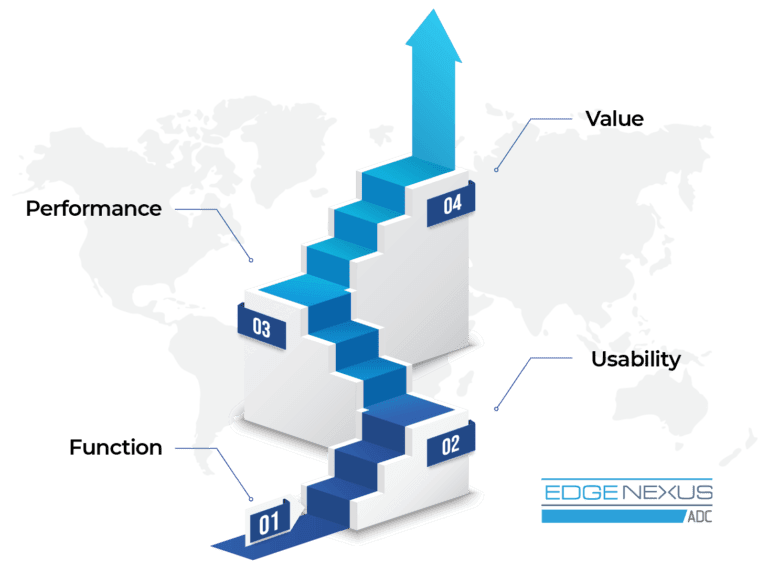
Celestix Networks, Inc.
Americas: +1 510 668 0700
EMEA : +44 20 3900 3737
Asia : +65 6958 0822
Japan : +81 3 5210 2991
There are many load balancing/ ADC vendors on the market so how do you go about comparing them? Which one is best?
The answer as you might expect is not simple and very much depends on your circumstances and requirements. To try and simplify things we will discuss in terms of the categories below that will make comparing load balancers slightly easier.


We still talk a lot about “load balancing” or load balancers but really these devices have evolved significantly and do a lot more than just load balancing. This is the reason why Gartner coined the new term ADC – Application Delivery Controller.
When comparing load balancers we will compare them with respect to ADC functionality as they will all do a great job of basic layer 4 load balancing and really it’s a dying requirement.
Traffic management, Application firewalling, advanced application health checks, GSLB, Security, SSO, Pre-authentication, advanced Logging, and reporting are just some of the features that can be found on a modern ADC.
It is worth noting that some vendors have an “app store” that will allow you to download new functionality and /or apps onto the device.
This is useful, especially for software ADC. Unlike a Hardware load balancer a software load balancer can be consistently upgraded and as such has no inherent “shelf life” that dictates at some point it will require a complete load balancer hardware refresh.
These devices have evolved form a complex geeky networking world where you would only be able to configure them after a 2 week course with command line whilst tapping out binary.
The modern usability assessment is more like this:
How much useful functionality can you drive out of of the device in relation to how large the investment in training and reading etc.
Usefulness Factor = (Amount of Features Available + Usability) /
(Amount/Time/Cost of Training Required)
For many people managing the ADC is just a small part of their work and as such cant commit the time for drawn out training.
This really ties back into the functionality. Some of the top end devices have all the functionality but the educational investment is so great that it’s wasted. Whilst this may be ok for the Enterprise where they have the “load balancer/ADC” person it might not work for the mid market where they still may have complex requirements but not necessarily so much dedicated time
So the lesson here is ensure the vendors you are looking at have the feature you require but also ensure its packaged in a useable way.


Many years ago when load balancers were basic layer 4 devices and the next generation of layer 7 ADC devices was emerging this was a massive concern. Layer 7 devices can now deliver outstanding performance.
Many load balancers use the same open source LVS/HAproxy etc code as such they all have a similar performance profile.
When we talk about ADC performance is more complex as they typically run at layer 7 and understand the traffic passing through them as opposed to a simple layer 4 shovel.
This understanding means that they can add value to the transaction from SSL, Caching to more complex traffic management modifying the request and response. Depending on how many of these features you enable you will use significantly more or less CPU.
So most vendors will have a device/software that will cope with your capacity its just choosing the right model. Some will offer a “sizing” tool but these are typically inaccurate as they dont consider the use case. You are much better off having a quick call with the vendor to be sure.
If you are building the next version of google then you should consider vendors such as f5 networks as they have the most scalable solutions else most load balancing vendors offer pretty good performance way more than 99.999 could ever use. Ie EdgeNexus can do 40Gbs+ at layer 7.
It is worth noting that most most vendors don’t publish any performance metrics with layer 7 rules in use as these will have a massive effect on performance. It is common that when load balancing a web application some rules such as URL redirect will be used.
So there is Price and Value.
Price is easy – find the product you need and then get the price for the equivalent model from each vendor. Value is more complex.
Typically there are 4 components:
However something else that should be considered is flexibility of the licensing.
You may be purchasing these for 3-5 years as such you may be moving from hardware to software or software to cloud. How can the vendor support this? For example can they offer a free licence migration from hard to software?



Celestix Networks, Inc.
Americas: +1 510 668 0700
EMEA : +44 20 3900 3737
Asia : +65 6958 0822
Japan : +81 3 5210 2991